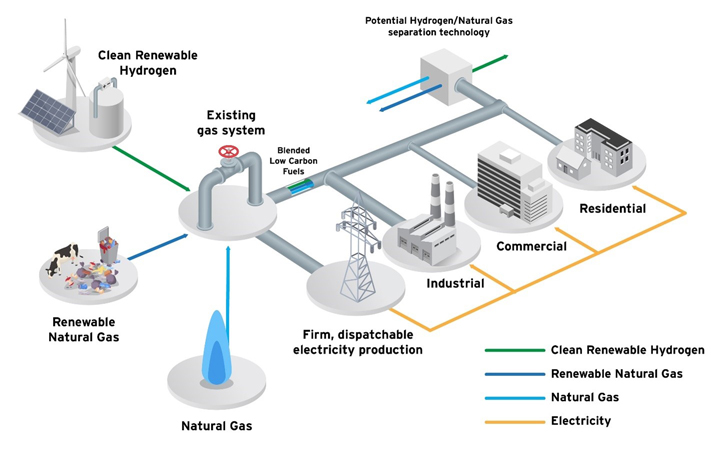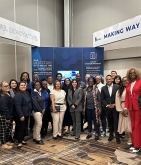LOS ANGELES – March 1, 2024 – Southern California Gas Co. (SoCalGas) today, along with three other California utilities, filed an application with the California Public Utilities Commission (CPUC) to develop a series of projects to demonstrate that blending clean hydrogen into the natural gas system is a safe and effective way to reduce greenhouse gas emissions, improve air quality and begin to scale up hydrogen as laid out in California’s climate . The application is in furtherance of the CPUC’s direction that gas utilities establish hydrogen blending demonstration projects in support of a safe hydrogen injection standard.
California has identified clean renewable hydrogen as a key tool in its ambitious climate goals, with Gov. Gavin Newsom calling it “an essential aspect of how we’ll power our future and cut pollution.” The blending of hydrogen into the natural gas system specifically has been identified in the California Air Resources Board’s 2022 Scoping Plan for Achieving Carbon Neutrality as a tool that can help “reduce demand for fossil energy and GHGs, and improve air quality.” In February, the California Energy Commission (CEC) released its 2023 Integrated Energy Policy Report which concluded that California should support efforts to assess hydrogen storage and delivery approaches, including blending into existing gas infrastructure, to help address the state’s climate challenges.
“More than two decades of research and real-world experience in the U.S. and abroad shows that blending hydrogen into natural gas infrastructure is a safe way to deliver cleaner fuel to customers,” said Neil Navin, SoCalGas Chief Clean Fuels Officer. “These demonstration projects are an important step for us to adopt hydrogen blending statewide, which has the potential to be an effective way to replace fossil fuels and create significant demand for the production of clean hydrogen at the scale identified by the California Air Resources Board as necessary for our energy transition.”

Hydrogen has been safely and reliably utilized around the world for decades. Hawai’i Gas, which has been using hydrogen in its fuel mix for a half-century, has more than 1,100 miles of pipelines that transport up to 15% hydrogen, serving homes, restaurants, and businesses. Other countries with hydrogen blending projects include Belgium, Canada, Denmark, France, Germany, Italy, and the United Kingdom. For example, in Canada since October 2022, ATCO has been safely blending 5% hydrogen into the Fort Saskatchewan natural gas distribution system, serving some 2,100 customers, with plans to increase the blend to 20% hydrogen.
In line with the state’s climate goals and in response to the CPUC’s directive, SoCalGas is proposing two demonstration projects that would begin blending amounts as low as 0.1% hydrogen into isolated sections of the natural gas system and incrementally increase the hydrogen concentrations based on safety and technical feasibility testing throughout the demonstrations. One project would serve the University of California, Irvine’s (UCI) Anteater Recreation Center and another would serve residents and businesses in the City of Orange Cove. SoCalGas will employ extensive safety measures on both projects that include leak surveys and detection technology, safety assessments of hydrogen storage and components, end-use equipment surveys, and education and training.
The collaborations with UCI and Orange Cove are part of a joint hydrogen blending demonstration application with San Diego Gas & Electric Co. (SDG&E), Pacific Gas and Electric Co. (PG&E) and Southwest Gas Corp. filed Friday with the CPUC. The CPUC’s decision on the utilities’ application could be decided as early as next winter.
“We appreciate SoCalGas' selection of Orange Cove for the hydrogen blending project. The City Council is pleased to support this project, which has the potential to transform the future of Orange Cove and the State of California,” said Orange Cove Mayor Guerra Silva. “We are delighted to begin this partnership and look forward to its positive impact on this small but innovative community.”
As hydrogen gas is made up of carbon-free molecules, blending it with natural gas could help lower carbon emissions in various sectors of the economy. For example, at a 20% renewable hydrogen blend by volume, the typical carbon dioxide (CO2) reduction potential of hydrogen is 6.3%. If California’s gas system was 20% hydrogen by volume in 2020, the CO2 reduction in just one year would have been equivalent to removing 1.52 million gasoline-powered passenger vehicles from the road or replacing about 6% of California’s registered automobiles with zero-emission vehicles.
In 2019, the CPUC began working to develop a hydrogen blending standard, prompting SoCalGas and SDG&E to propose blending demonstration projects in their service territories. Since then, the CPUC has worked to gain a better understanding of hydrogen blending in the natural gas system, enlisting the University of California, Riverside to perform a comprehensive study of blending. That study concluded that “it is critical to conduct real world demonstration of hydrogen blending under safe and controlled conditions” in order to close knowledge gaps.
Over the past two decades, SoCalGas has worked on dozens of hydrogen research projects exploring ways to help decarbonize industries such as heavy transportation and chemical processes to demonstrate safe hydrogen integration into California’s energy systems, including the United States’ first successful power-to-gas project in 2016 with UCI, which blended clean hydrogen into a natural gas pipeline to help power parts of the school’s campus.
For more information, please visit https://www.socalgas.com/h2blending.
About SoCalGas
Headquartered in Los Angeles, SoCalGas is the largest gas distribution utility in the United States. SoCalGas aims to deliver affordable, reliable, and increasingly renewable gas service to approximately 21 million consumers across approximately 24,000 square miles of Central and Southern California. We believe gas delivered through our pipelines plays a key role in California's clean energy transition by supporting energy system reliability and resiliency and enabling integration of renewable resources.
SoCalGas' mission is to build the cleanest, safest and most innovative energy infrastructure company in America. In support of that mission, SoCalGas aspires to achieve net-zero greenhouse gas emissions in its operations and delivery of energy by 2045 and to replace 20 percent of its traditional natural gas supply to core customers with renewable natural gas (RNG) by 2030. RNG can be made from waste created by landfills and wastewater treatment plants. SoCalGas is also investing in its gas delivery infrastructure while working to keep bills affordable for customers. SoCalGas is a subsidiary of Sempra(NYSE: SRE), an energy infrastructure company based in San Diego.
For more information visit socalgas.com/newsroom or connect with SoCalGas on X (formerly Twitter)(@SoCalGas), Instagram (@SoCalGas), Facebook.
This press release contains forward-looking statements within the meaning of the Private Securities Litigation Reform Act of 1995. Forward-looking statements are based on assumptions about the future, involve risks and uncertainties, and are not guarantees. Future results may differ materially from those expressed or implied in any forward-looking statement. These forward-looking statements represent our estimates and assumptions only as of the date of this press release. We assume no obligation to update or revise any forward-looking statement as a result of new information, future events or otherwise.
In this press release, forward-looking statements can be identified by words such as “believe,” “expect,” “intend,” “anticipate,” “contemplate,” “plan,” “estimate,” “project,” “forecast,” “envision,” “should,” “could,” “would,” “will,” “confident,” “may,” “can,” “potential,” “possible,” “proposed,” “in process,” “construct,” “develop,” “opportunity,” “preliminary,” “initiative,” "target," "outlook," “optimistic,” “poised,” “maintain,” “continue,” “progress,” “advance,” “goal,” “aim,” “commit,” or similar expressions, or when we discuss our guidance, priorities, strategy, goals, vision, mission, opportunities, projections, intentions or expectations.
Factors, among others, that could cause actual results and events to differ materially from those expressed or implied in any forward-looking statement include: decisions, investigations, inquiries, regulations, denials or revocations of permits, consents, approvals or other authorizations, renewals of franchises, and other actions, including the failure to honor contracts and commitments, by the (i) California Public Utilities Commission (CPUC), U.S. Department of Energy, U.S. Internal Revenue Service and other regulatory bodies and (ii) U.S. and states, counties, cities and other jurisdictions therein where we do business; the success of business development efforts and construction projects, including risks related to (i) completing construction projects or other transactions on schedule and budget, (ii) realizing anticipated benefits from any of these efforts if completed, (iii) obtaining third-party consents and approvals, and (iv) third parties honoring their contracts and commitments; macroeconomic trends or other factors that could change our capital expenditure plans and their potential impact on rate base or other growth; litigation, arbitrations and other proceedings, and changes to laws and regulations, including those related to tax and trade policy; cybersecurity threats, including by state and state-sponsored actors, of ransomware or other attacks on our systems or the systems of third parties with which we conduct business, including the energy grid or other energy infrastructure; the availability, uses, sufficiency, and cost of capital resources and our ability to borrow money on favorable terms and meet our obligations, including due to (i) actions by credit rating agencies to downgrade our credit ratings or place those ratings on negative outlook, (ii) instability in the capital markets, or (iii) rising interest rates and inflation; the impact on affordability of our customer rates and our cost of capital and on our ability to pass through higher costs to customers due to (i) volatility in inflation, interest rates and commodity prices and (ii) the cost of meeting the demand for lower carbon and reliable energy in California; the impact of climate and sustainability policies, laws, rules, regulations, disclosures and trends, including actions to reduce or eliminate reliance on natural gas, increased uncertainty in the political or regulatory environment for California natural gas distribution companies, the risk of nonrecovery for stranded assets, and uncertainty related to relevant emerging and early-stage technologies; weather, natural disasters, pandemics, accidents, equipment failures, explosions, terrorism, information system outages or other events, such as work stoppages, that disrupt our operations, damage our facilities or systems, cause the release of harmful materials or fires or subject us to liability for damages, fines and penalties, some of which may not be recoverable through regulatory mechanisms or insurance or may impact our ability to obtain satisfactory levels of affordable insurance; the availability of natural gas and natural gas storage capacity, including disruptions caused by failures in the pipeline system or limitations on the withdrawal of natural gas from storage facilities; and other uncertainties, some of which are difficult to predict and beyond our control.
These risks and uncertainties are further discussed in the reports that the company has filed with the U.S. Securities and Exchange Commission (SEC). These reports are available through the EDGAR system free-of-charge on the SEC's website, www.sec.gov and on Sempra’s website, www.sempra.com. Investors should not rely unduly on any forward-looking statements.
Sempra Infrastructure, Sempra Infrastructure Partners, Sempra Texas, Sempra Texas Utilities, Oncor Electric Delivery Company LLC (Oncor) and Infraestructura Energética Nova, S.A.P.I. de C.V. (IEnova) are not the same companies as the California utilities, San Diego Gas & Electric Company or Southern California Gas Company, and Sempra Infrastructure, Sempra Infrastructure Partners, Sempra Texas, Sempra Texas Utilities, Oncor and IEnova are not regulated by the CPUC.














